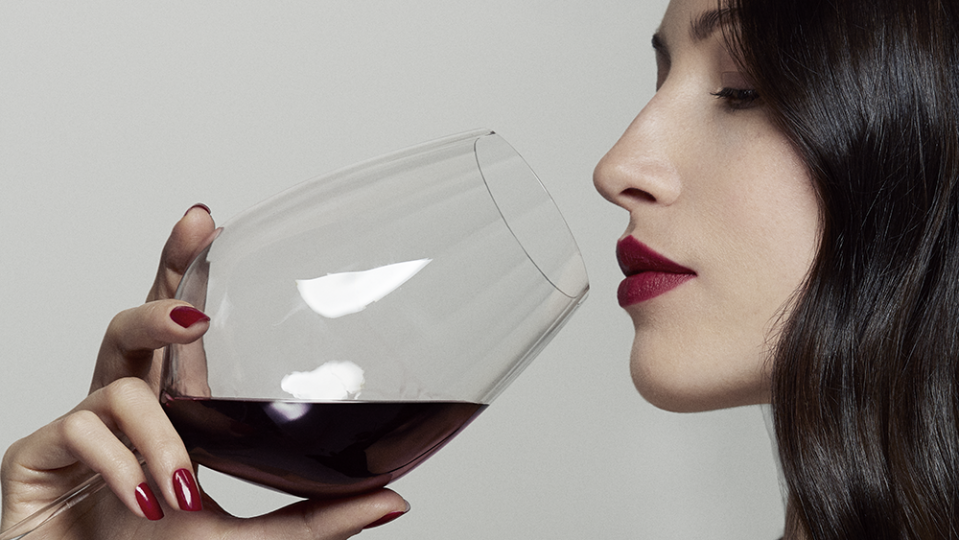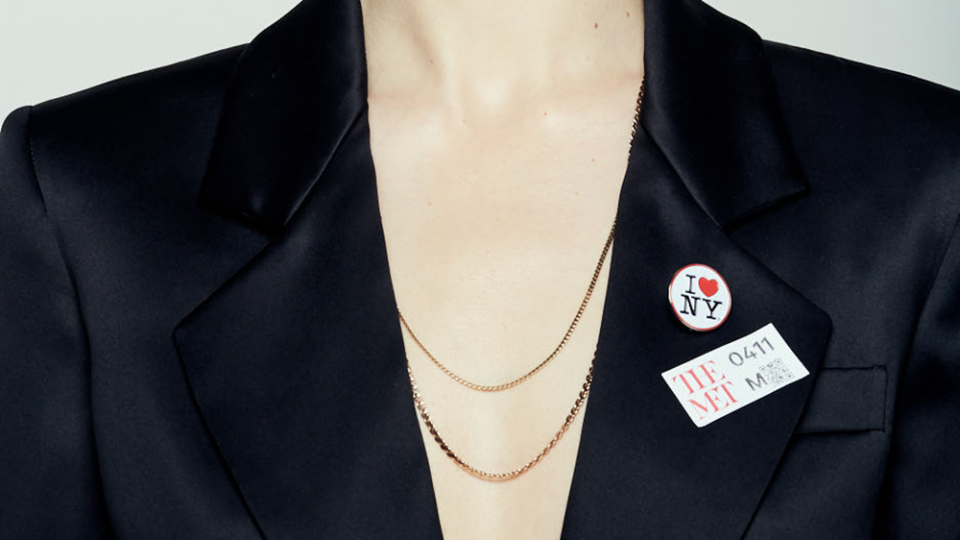14 Big Ideas That Are Changing Luxury Lifestyle Right Now

This year, the editors were asked to take the temperature of the industries under their watch and sum up the single “big idea” that has defined the year just gone.
Some of these stories are poignant: The tourism industry finally woke up after a report suggested it caused 8 percent of global greenhouse emissions. Meanwhile, the reverberations are still rippling through the art world from the decision of several institutions to reject the philanthropy of those who they felt were tarnished by associations: The Sackler family fell afoul of the Guggenheim in New York, as well as the National Portrait Gallery and the Tate in London, because of its links to the opioid crisis; and the Whitney and Museum of Modern Art both had questions to answer over some of their patrons’ past dealings.
Related stories
How a Public Art Program Transformed Qatar's Capital City Into a Blue-Chip Sculpture Park
'We Are Trying to Create Energy Centers': Hauser & Wirth's Marc Payot on Redefining the Art Gallery
The 7 Most Satisfying Cigars of the Year
Other ideas, no less contentious in their fields, include the bold supposition that we are at the point in audio technology where both analog and digital reproduction have reached equally exceptional levels; and that Napa winemakers are moving more in line with their European cousins by producing leaner, more elegant wines that will age gracefully but, more significantly, are also ready to drink now; or that the suit has been reborn, worn with liberation and e?lan, to mark a new sense of freedom in style circles.
You will find these big ideas in little excerpts below, hopefully, they add a little color and context to the Best of the Best choices in each category.
BIG IDEA IN AUTOMOTIVE:
Artificial Intelligence Takes the Wheel
A self-aware, crime-fighting car named KITT. That was the premise for the 1980s hit TV series Knight Rider. But what was once automotive fantasy is now found—minus the crime-fighting and banter—in new models that offer advances in artificial intelligence (AI).
Take the Audi A8, touted as the first production example to attain Level 3 autonomous status. And it’s only the beginning, according to Thomas Mu?ller, head of the brand’s chassis development and automated driving team. “Our vision for Audi AI is divided into two functional areas: intelligent assistance systems—on the path to fully autonomous driving—and interactive intelligence, whereby the vehicle becomes an empathetic companion,” Mu?ller says.
Mercedes-Benz provides its own early stages of the latter with the Hey Mercedes voice-recognition platform on the A-Class. “US customers running MBUX [Mercedes- Benz User Experience] are able to direct long, compound questions, as well as general knowledge inquiries,” says Nils Schanz, head of the company’s voice control division.
One car anticipates your intentions without a word—the Lamborghini Huraca?n Evo. Its “feed forward logic” relies on a processor that analyzes driver inputs to adjust handling and power-train systems proactively every 20 milliseconds. “Artificial intelligence is the synchronization of human and machine, a way for these two to understand one another,” says Maurizio Reggiani, Lamborghini’s chief technical officer. “The Evo is exactly this.”
Whether offering computer-controlled commuting, enlightening conversation or predictive performance, more of today’s autos give KITT some real competition.
BIG IDEA IN STYLE:
The Suit Lives On
Turns out the reports of its death were a little exagerated, because the suit is back—but this time without much of the formality and structure of the past. If you’re skeptical, especially after New York’s conservative bastion of wealth Goldman Sachs declared a flexible dress code in March, just look to the runway shows in London, Paris and Milan earlier in the year. Menswear brands downright flaunted the two-piece—some even without a shirt underneath (don’t worry, we’re not advocating that)—reviving it in a modern context. Sharper cuts, roomier silhouettes that still flatter but deliver ease of movement, and lightweight, soft materials were all prevalent. So away from the catwalks, what does that mean for you? It’s time to get friendly with your tailor.
BIG IDEA IN AVIATION:
Greener Business Skies
One of the most expensive aspects of owning or chartering a plane is the cost of fuel. It takes a lot of energy—and creates a lot of CO2 emissions—to get these amazing machines into the air. And while we have seen an uptick in alternative-energy aircraft—Israel-based Eviation’s all-electric and Boeing/JetBlue–backed Zunum’s hybrid planes, for instance—vast efforts are also going into raising the awareness and availability of sustainable alternative jet fuels (SAJF) for business and commercial aircraft already in service. In January, California’s Van Nuys Airport became the first general aviation airport in the United States to offer SAJF on a trial basis and serve as a model for offering alternative fuels at other airports, which could help the industry achieve emissions reduction goals. Gulfstream, which has been using SAJF since 2016 at its Savannah headquarters, proved how well the alternative fuel performs by flying its G280 aircraft into Van Nuys on renewable fuel and breaking a city-pair record on the way—covering 2,243 nautical miles in 4 hours and 49 minutes at an average speed of Mach 0.85. Early this year, the brand also announced its first sale of SAJF to a Gulfstream operator. After years in development, these new approaches to flight are finally taking off.
BIG IDEA IN MARINE:
The Thirst for Adventure
Expedition- or explorer-style yachts have been around for years, built by a specialized few. Now, however, echoing the rise in popularity of the SUV in the automobile market, every boatbuilder wants to get in on the action. Earlier this year, Jonathan Beckett, CEO of superyacht brokerage house Burgess, said, “The new style of yachting is to be more adventurous, both with destinations and activities.” Think kite surfing near a remote Pacific atoll or in a northern fjord. This last year, Dutch shipyard Heesen unveiled plans for its first explorer yacht concept, the 187-foot XVenture, and Italian yard CRN has three AlfaRosso explorer-style vessels in build. Baglietto, also based in Italy, has a 141-foot explorer-yacht project in the works, and the 230-foot Project Crystal (above) from Dutch firm Mulder Design will have an Ice Class hull and sleep 14 guests. Sanlorenzo launched its steel-hulled 500Exp expedition yacht at last fall’s Monaco Yacht Show. It looks like the off-the-beaten-path destinations just might be a little more crowded in years to come.
BIG IDEA IN WATCHES:
Jumping Hour
The watch industry is a slow-moving business—it takes time to create time. But as the world moves at a faster pace, even the titans of watchmaking have had to rethink how they do business. Those calling the shots remain, remarkably, the heads of family-owned businesses that include Swatch Group, Richard Mille, Audemars Piguet and Patek Philippe. As head of Swatch Group, the largest watch conglomerate, Nick Hayek announced last year that he would no longer be showing his brands at Baselworld, Switzerland’s—and the world’s—biggest watch trade show. Richard Mille and Franc?ois-Henry Bennahmias, Audemars Piguet’s CEO, followed, declaring they would not be showing at Salon International de la Haute Horlogerie, the second-largest show. Meanwhile, amid rumors that Patek Philippe was looking for buyers, president Thierry Stern had to clarify that the family would never sell the business.
Patek Philippe’s grip on top consumers allows it to do as it pleases. Stern committed to another year at Baselworld; without the brand (and fellow power player Rolex), the event would fail. Patek Philippe does not have stand-alone stores, and official retailers run Rolex boutiques, so the fair serves a different purpose for these two pillars. But for the others, forging a new path is paramount as they pivot toward direct-to-consumer business models and experiential mono-brand shops. What will change for consumers? New product innovations and an onslaught of elevated red-carpet experiences from brands looking to capture the attention of clients, collectors and followers.
BIG IDEA IN SPIRITS:
The Spirit of Experimentation

Across the millennia, wherever man has gone, he’s made something potent to drink. It seems there would be little to add after those centuries. And yet . . . the world’s top distillers keep following the advice of poet Ezra Pound to “make it new.” To the lab, the fields and the forests they go, experimenting with atypical cask woods, different barrel finishings and unusual botanicals, and employing native ingredients, such as yeasts and potatoes, in different ways. We look forward to the next renditions of their spirited adventures in and out of the lab.
BIG IDEA IN CULINARY:
Fermentation
With a glint in his eye and a mischievous grin, the chef said, “Follow me.” He darted up the stairs into an office above the restaurant, where menus and invoices were strewn about, then approached a fully stocked bookcase in the corner. “Check this out,” he said, while straining to slide the bookcase on hidden casters. His efforts revealed a large hole in the wall, stocked with jars of various sizes filled with vinegars and vegetables suspended in murky liquids. The chef, who requested anonymity to evade detection by the health department, wanted to experiment with fermentation without having to jump through his city’s endless hoops to get approval. He was on the search for flavor, no matter the cost. Because although the cool thing for chefs to tout over the last decade has been the freshness of their ingredients, he also was driven to explore the culinary possibilities of letting food rot.
He’s not alone. While others have their ferments secreted away like this chef, this past year has been filled with cooks such as John Shields at Smyth in Chicago or Justin Legaspi at Bateau in Seattle showing off their experiments, celebrating garums, vinegars, misos and kimchis on social media and menus. The movement ramped up in earnest last fall when Rene? Redzepi and David Zilber, Noma’s chef and head of fermentation, respectively, published The Noma Guide to Fermentation, in which they sing the praises of ferments for adding depth of flavor to cooking and also provide step-by-step instructions on how to ferment at home.
Noma had been characterized as the foraging restaurant for so long, leading that revolution in cooking, that people missed the fact that fermentation has driven its cuisine. “Imagine you’re saute?ing some greens, and you want to have something that just builds a bridge between each ingredient and lifts everything,” Redzepi says. “A dash of the right ferment and it’s like poof. Suddenly your guests are like, whoa—they’re feeling happy.”
BIG IDEA IN TRAVEL:
Strides in Conservation

Last year, just as the 2018 edition of Best of the Best was going to press, the travel industry was put on blast. A new report by the scientific journal Nature Climate Change revealed that tourism now accounts for roughly eight percent of the world’s greenhouse gas emissions. Of course, we already knew that flying was bad for the planet, and nobody was in denial about the waste of all those little plastic bottles in our hotel rooms, but this was a wake-up call. And tourism has finally begun to answer.
The past year has made green the new black like never before as hotels and airlines at last put their money where their mouths are when it comes to giving a damn about the planet. Brands such as Four Seasons and Oetker Collection have gone single-use-plastic-free, and Marriott International has vowed to eliminate the use of straws in all 6,500 of its hotels, eliminating roughly 500 tons of plastic annually. Qantas has begun test flights using a biofuel made from crop seeds—a switch that could decrease emissions by up to 80 percent compared to traditional jet fuel—and other airlines, including Delta and United, have introduced carbon offset programs that compensate for emissions by funding global recycling and waste minimization processes.
But it was a little hotel in Belize that had us thinking even bigger about travel’s big idea. Itz’ana, an eco-resort in the beach town of Placencia, announced a collection of solar-powered villas whose small footprint will be completely offset by a national reforestation project. When the resort opens later this year, it will only be the start, but it will be a blueprint for the future of sustainable travel. Better late than never, we say.
BIG IDEA IN TECH:
The Antipodes of Audio

There are two camps in the audio community—analog vs. digital—and they have been crusading against each other like zealots since the dawn of the compact disc in 1982, each swearing that their solution to state-of-the-art sound is audio’s true religion.
In the early days, most digitally recorded and reproduced music could make your ears bleed because it was so unnaturally sharp and edgy, with sound not remotely comparable to magnetic tape or LPs. The intervening decades have further honed the analog and digital arts, with phono reproduction today achieving the highest fidelity in its history and causing analog acolytes to exclaim “Eureka!” Meanwhile, digital technology has played leapfrog, making sonic advancements in hardware and software, to a point where high-resolution audio streaming from music services like Tidal and Qobuz—with vast libraries of music—offer irresistible convenience and unimpeachable sound.
So, is the highest-of-high fidelity found in the grooves of the ancient LP, or the bits and bytes of high-res digital? We think the time has come when music lovers who refuse to compromise can finally get on board with both.
BIG IDEA IN WINE:
The Old World Is New Again

In a winemaking sense, the West Coast has been looking back across the pond to France and Italy recently for cues on both style and technique. We’re seeing a shift from the big fruit bombs of yore to leaner, more elegant reds that are just right to drink now but still have the power and structure to hold their own in the cellar. Taking another cue from Europe, some pioneers are backing away from new oak and experimenting with neutral casks, looking for an even greater emphasis on terroir. Even Oregon and Sonoma Pinot Noirs have become more Burgundian in style. We couldn’t be happier about all these juicy developments.
BIG IDEA IN ART:
Donors’ Ethics Come Under Scrutiny

It wasn’t so long ago that the Sackler clan was celebrated for its generous philanthropy: There are Sackler wings, galleries, courtyards and the like at the Metropolitan Museum of Art, the Louvre, the Guggenheim, the Royal Academy of Arts and the Victoria and Albert Museum, to name just a few of the institutions that have benefited from the family’s largesse. What a difference a few years—and an estimated 47,000 opioid-overdose deaths in 2017—make.
Once wooed and honored, the family that has become synonymous with the opioid crisis—through one branch’s ownership of Purdue Pharma, maker of OxyContin—was roundly shunned by the art world in the spring. In a stunning turn of events, first the National Portrait Gallery, then the Tate, both in London, declared a moratorium on gifts from the Sacklers. The Guggenheim in New York, where artist Nan Goldin’s activist group Prescription Addiction Intervention Now (PAIN) had staged a “die-in” the previous month, quickly followed suit. By the end of March, the London-based Sackler Trust announced that it would “pause all new philanthropic giving.”
Meanwhile, protesters at the Whitney Museum of American Art—including almost 100 staffers—pressured its board to cut loose its vice chair, Warren B. Kanders, whose company Safariland has been linked to teargas used on migrants along the border. And another activist group decried the Museum of Modern Art trustee Larry Fink, CEO of BlackRock, for investing in private prisons. According to reports, about 10 protesters showed up at an awards lunch honoring another funder of private prisons, shouting, “There is blood on this art!” Both museums stood firm behind their patrons but did not obstruct the protesters.
Transparency about entities—be they individuals, corporations or sovereign nations—using cultural institutions to put a gloss on abhorrent practices is a positive development. But exiling them has its downside. As some museum professionals have recently told Robb Report, a staggering number of fortunes have shady connections—so many, in fact, that were institutions to decline all ethically tainted money, they might have a hard time keeping the lights on.
BIG IDEA IN JEWELRY:
Artist’s Jewelry
If you love Alexander Calder’s mobiles, why not acquire one of his playful necklaces? So goes the thinking among a growing set of stylish women looking for bold, unique jewelry, as the overwhelming interest in collecting modern and contemporary art permeates the jewelry world.
“There is a greater cultural sensitivity to art and artists today,” says Mahnaz Ispahani Bartos, whose New York jewelry gallery Mahnaz Collection offers many artists’ pieces. “People want to learn about an artist’s oeuvre and their variety of me?tiers.” She offers pieces by sculptors who also made jewelry in the 1960s and ’70s, including an aquamarine and 18-karat-gold necklace and earrings (above) by Brazilian brothers Roberto Burle Marx and Haroldo Burle Marx.
Jewelry created by artists, which tends to be more sculptural and about the entirety of the composition rather than emphasizing diamonds and gemstones, is also the right accessory for the times: Everyday style is now more understated, less formal. Demand is catching on internationally: Louisa Guinness’s eponymous London gallery sells artists’ jewelry exclusively, and other boutiques that once carried only vintage designs are starting to show artists’ work. Buy it while you can: Once word gets out that artists’ jewelry is on the rise, prices will likely go the way of the rest of the art market—up.
BIG IDEA IN DESIGN:
The Art and Design Merger
The line between art and design, long fuzzy, has now been almost completely erased. For Idea years, emerging and established designers alike have been creating limited-edition and one-off pieces of furniture with only a hint of function, which get presented at fairs like Design Miami and TEFAF. And artists have occasionally been tapped for design collaborations. Now, instead of trying to find balance between these different disciplines, artists and designers—if we still care to differentiate—are working freely in both.
The well-regarded contemporary artist Deborah Kass designed rugs with BravinLee programs, which came out late last year. The veteran industrial designer Jasper Morrison has an exhibition of his cork furniture running at the New York art gallery Kasmin through June.
And a new wave of talents who once operated in the middle ground are simultaneously producing both more exclusive artworks and more accessible consumer products.
At the top of the heap are the Los Angeles–based Haas Brothers, twins Nikolai and Simon, whose beastly, fantastical furniture has always put a premium on creative experimentation. As their profile has risen, they have relished expanding their oeuvre. Their work is repped by Marianne Boesky Gallery in New York, which also boasts the likes of Frank Stella, and was the focus of a solo show at the Bass museum in Miami this year. At the same time, the home accessories company L’Objet introduced the Haas Brothers’ 65-piece tabletop collection, including otherworldly cups, bowls and vases, as well as monster-shaped serving vessels—good news for anyone looking to shake up a dinner party.
BIG IDEA IN CIGARS:
On Fire

For decades now, public spaces for cigars to be smoked have been whittled away to almost nothing. Last year saw a seismic shift in smoking culture, however, with the legalization of marijuana across many states. Suddenly there’s a new enthusiasm for the luxurious accessories that cigar smokers have long appreciated—beautiful ashtrays, lighters and humidors—as well as a greater need for social spaces in which to light up. While cannabis and cigars are two very different substances (with very different effects), we expect to see a more embracing attitude toward smoke in general in the years to come.
Sign up for Robb Report's Newsletter. For the latest news, follow us on Facebook, Twitter, and Instagram.